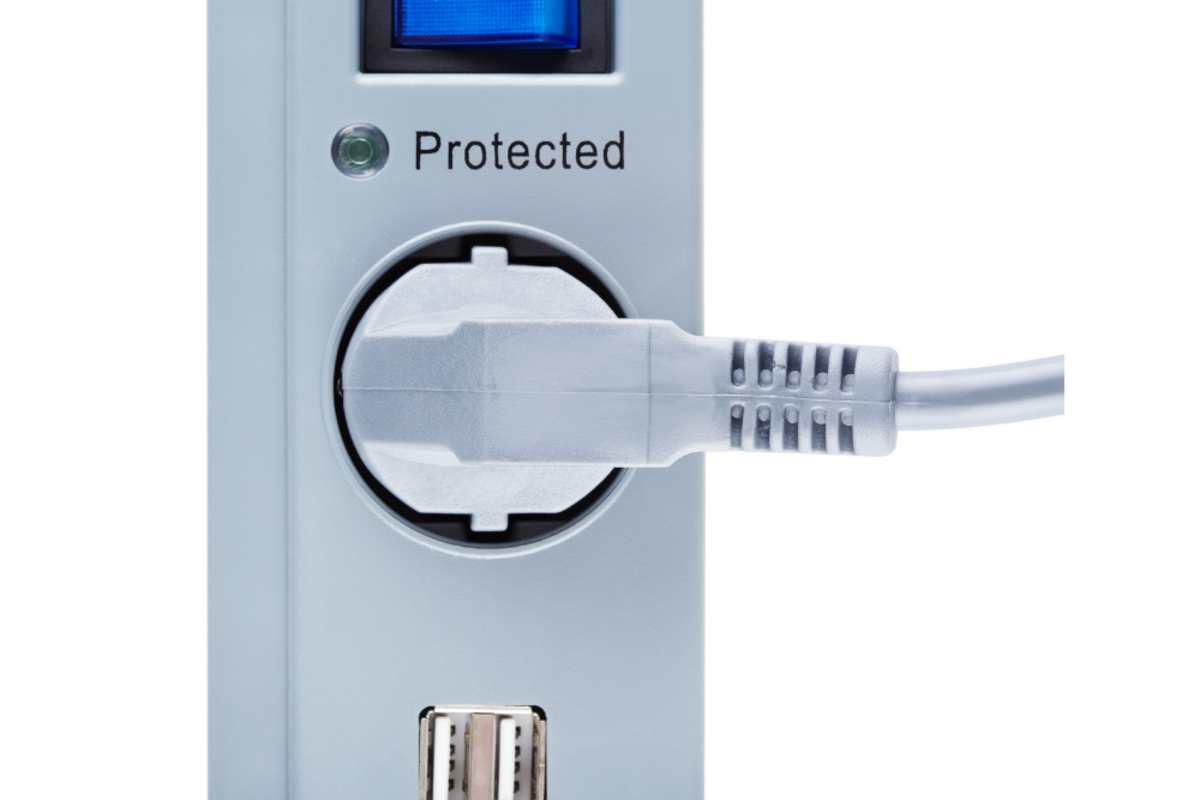In this hub, we will discuss what a power surge is and why you need a surge protector to protect your electronics. We will also provide information on the different types of surge protectors available on the market today.
What Is a Power Surge?
So first things first—what is a power surge? A power surge is a sudden increase in voltage. This can happen for a variety of reasons, but the most common reason is when lightning strikes nearby. When this happens, the electrical current can travel through the wiring and into your home or office, damaging any electronics that are plugged in. Power surges can also happen when there is a problem with the power grid or when an appliance (like an air conditioner) turns on and off.
Why Do You Need a Surge Protector?
Now that we know what a power surge is, let’s talk about why you need a surge protector. As we mentioned before, power surges can damage your electronics. In some cases, the damage is minor and can be fixed. However, in other cases, the damage is irreparable and you will need to replace your electronic device. A surge protector can help prevent this type of damage by absorbing the excess voltage and redirecting it to the ground. This process helps protect your electronics from being damaged by a power surge. There are a few different types of surge protectors available on the market today. We will discuss these in more detail below.
Types of Surge Protectors
Whole-house surge protector. This type of surge protector is installed at your electrical panel and provides protection for all of the electronics in your home or office. Plug-in surge protector. This type of surge protector is plugged into an outlet and provides protection for the electronics that are plugged into it. Battery backup and surge protector. This type of surge protector not only provides protection from power surges but also provides backup power in the event of a power outage. Portable surge protector. This type of surge protector can be plugged into an outlet or used with a battery. It is small and lightweight, making it easy to take with you when you travel.
No matter which type of surge protector you choose, make sure that it is rated for the voltage of your electronics. Most surge protectors are rated for 120 volts, but some devices require a higher voltage. Be sure to read the reviews before purchasing a surge protector. This will help you find one that is right for you and your needs.
Warning Signs of an Electrical Surge
If you live in an area that is prone to power surges, then you should definitely consider investing in a surge protector. If you are not sure if your area is prone to power surges, there are a few signs that you can look for. One sign of an electrical surge is flickering lights. If the lights in your home or office are flickering, it could be a sign that there is an electrical surge. Another sign of an electrical surge is buzzing or humming from your outlets. If you hear a buzzing or humming sound coming from your outlets, it could be a sign of an electrical surge. If you notice any of these signs, it is best to err on the side of caution and invest in a surge protector. Surge protectors are relatively inexpensive and can save you a lot of money in the long run.
Common Myths About Surge Protectors
There are a lot of myths about surge protectors out there. We will dispel some of the most common ones below:
Surge Protectors Are Expensive.
While there are some high-end surge protectors on the market, there are also a lot of affordable options available. You can find a surge protector that fits your budget.
Surge Protectors Are Only for Electronics.
While surge protectors can help protect your electronics, they can also be used to protect other items in your home or office. For example, you can use a surge protector to protect your computer from power surges.
Surge Protectors Aren’t Necessary.
While surge protectors are not required, they can be a great way to protect your electronics from damage. If you live in an area that is prone to power surges, we recommend investing in a surge protector.
Cost and Where to Buy Them
Surge protectors range in price from a few dollars to a few hundred dollars. You can purchase surge protectors at most electronics stores or online. When choosing a surge protector, be sure to read the reviews and compare prices. You should also make sure that the surge protector is rated for the voltage of your electronics.
Other Options
There are a few other ways that you can protect your electronics from electrical surges. One way is to unplug your electronics during a power surge. Another way is to use a battery backup system. This will provide power to your electronics in the event of a power outage.
Conclusion
In conclusion, a surge protector is an essential piece of technology for anyone who wants to protect their electronics from power surges. Not only are they affordable, but they’re also easy to use. We hope this article has helped you understand the importance of using a surge protector and given you the information you need to choose the right one for your needs. This content is accurate and true to the best of the author’s knowledge and is not meant to substitute for formal and individualized advice from a qualified professional. © 2022 Daniel Edulan Melana
